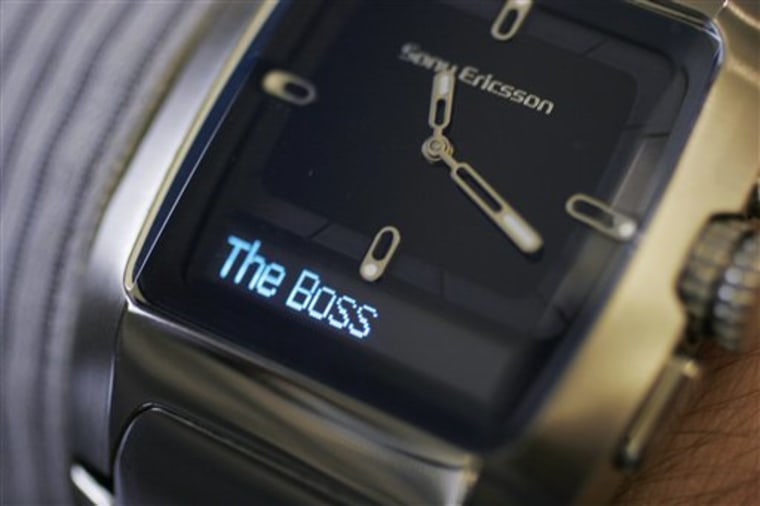The consortium behind the Bluetooth wireless standard announced Tuesday that Nokia Corp., the world's largest maker of cell phones, is contributing a technology that promises to bring the wireless connections to devices that are too small for regular Bluetooth chips.
The technology, called Wibree, opens up the possibility of a host of small wearable gadgets, like watches, heart rate monitors, pedometers and pill boxes that communicate with Bluetooth-equipped cell phones or computers. A watch could display the user's incoming text messages, for instance, or an action figure toy could sense the presence of other toys.
Wibree has a lower data rate and much lower power consumption than Bluetooth, which is in widespread use as the interface between cell phones and wireless headsets. That means smaller batteries that don't have to be charged often, unlike Bluetooth headsets.
Nokia, which is based in Finland, started developing Wibree in 2001, and announced the technology in October last year. It formed a Wibree Forum with other companies to license and exploit the technology, an effort that will be subsumed by the Bluetooth Special Interest Group, which includes about 8,000 companies.
"Our members have been asking for an ultra low power Bluetooth solution. With Nokia's innovative development and contribution to the Bluetooth specification with Wibree, we will be able to deliver this in approximately a year," said Michael Foley, director of the Bluetooth SIG.
The decision by the Bluetooth SIG to embrace Wibree validates Nokia's technology, but it also means the Finnish company is giving away the results of a multiyear development effort as Wibree will now be licensed royalty-free. Such a move is not uncommon in the technology field _ Sweden's LM Ericsson developed and then gave away the original Bluetooth technology in the 1990s, calculating that widespread and fast adoption would allow the company to benefit more from its leadership than it would from a licensing scheme.
Nokia had been looking to turn Wibree over to an open standards group from the beginning, said Harri Tulimaa, Nokia's head of technology out-licensing. The move will help ensure Wibree will be deployed as widely as possible, he said Tuesday.
There is already a Bluetooth watch, sold under several brands, that vibrates in response to incoming calls on the user's Sony Ericsson phone and shows the number. However, because of the power-hungry Bluetooth chip and vibration function, the watch is large and heavy and requires charging every few weeks. Foley said Wibree should enable a wireless watch that's powered by a button cell that only needs replacing once per year.
Devices with Wibree chips will not be able to communicate with existing Bluetooth-equipped devices, according to Foley. However, future Bluetooth devices could relatively easily and cheaply be upgraded to include the ability to talk to Wibree devices, since the technologies use the same frequencies, and no new antenna or radio components would be needed.
Aside from Nokia, companies that have been involved in Wibree development include Irvine, Calif.-based Broadcom Corp., Seiko Epson of Japan and STMicroelectronics NV of Switzerland.
Last year, the Bluetooth SIG embraced another wireless technology, know as ultra-wideband, or UWB, for high-speed data transfer. A possible early application would be the transfer of high-definition video between camcorders and TV sets.
